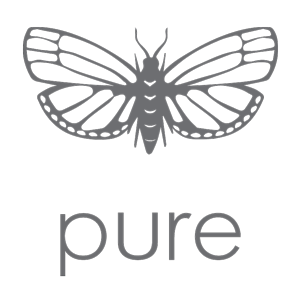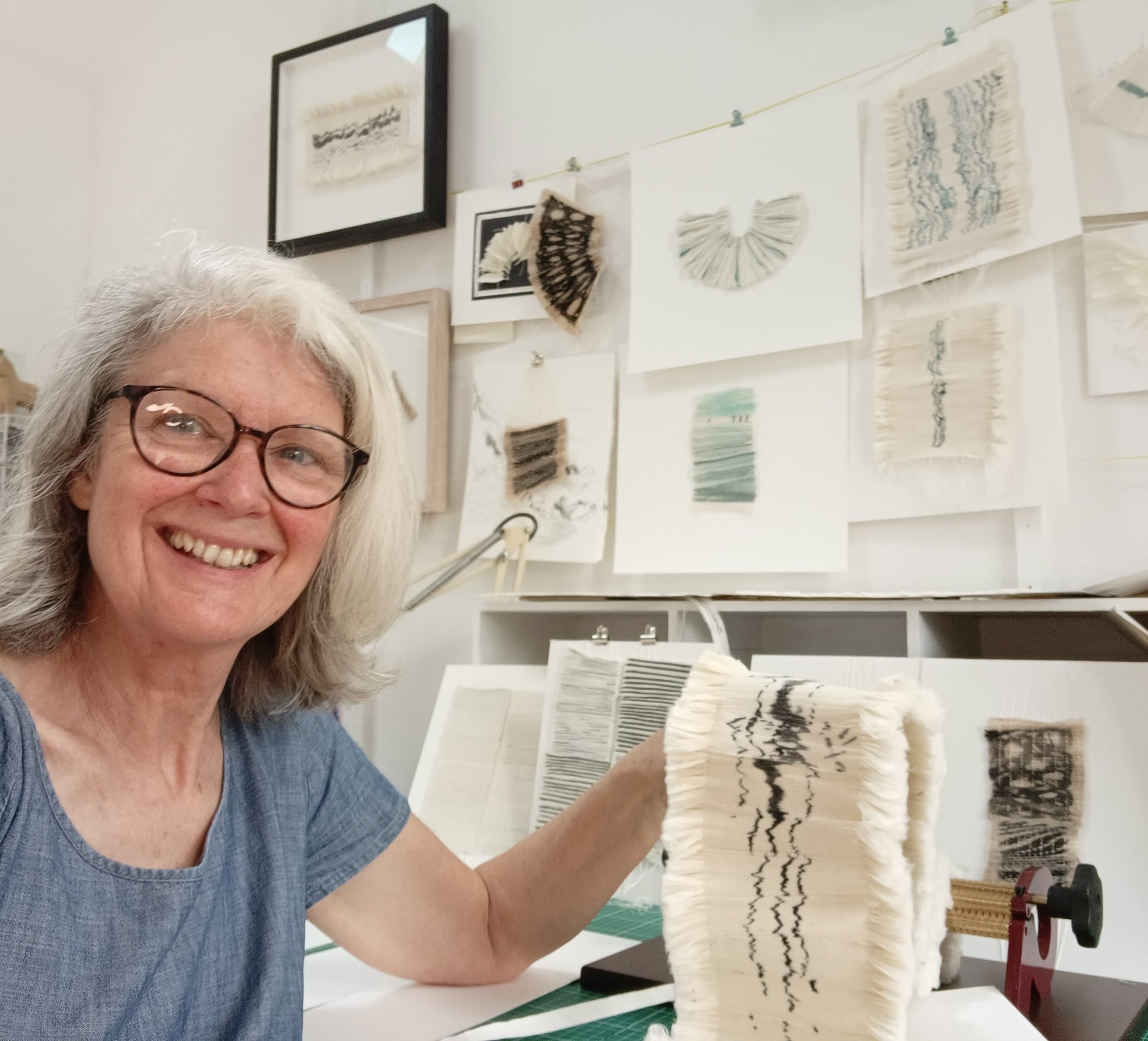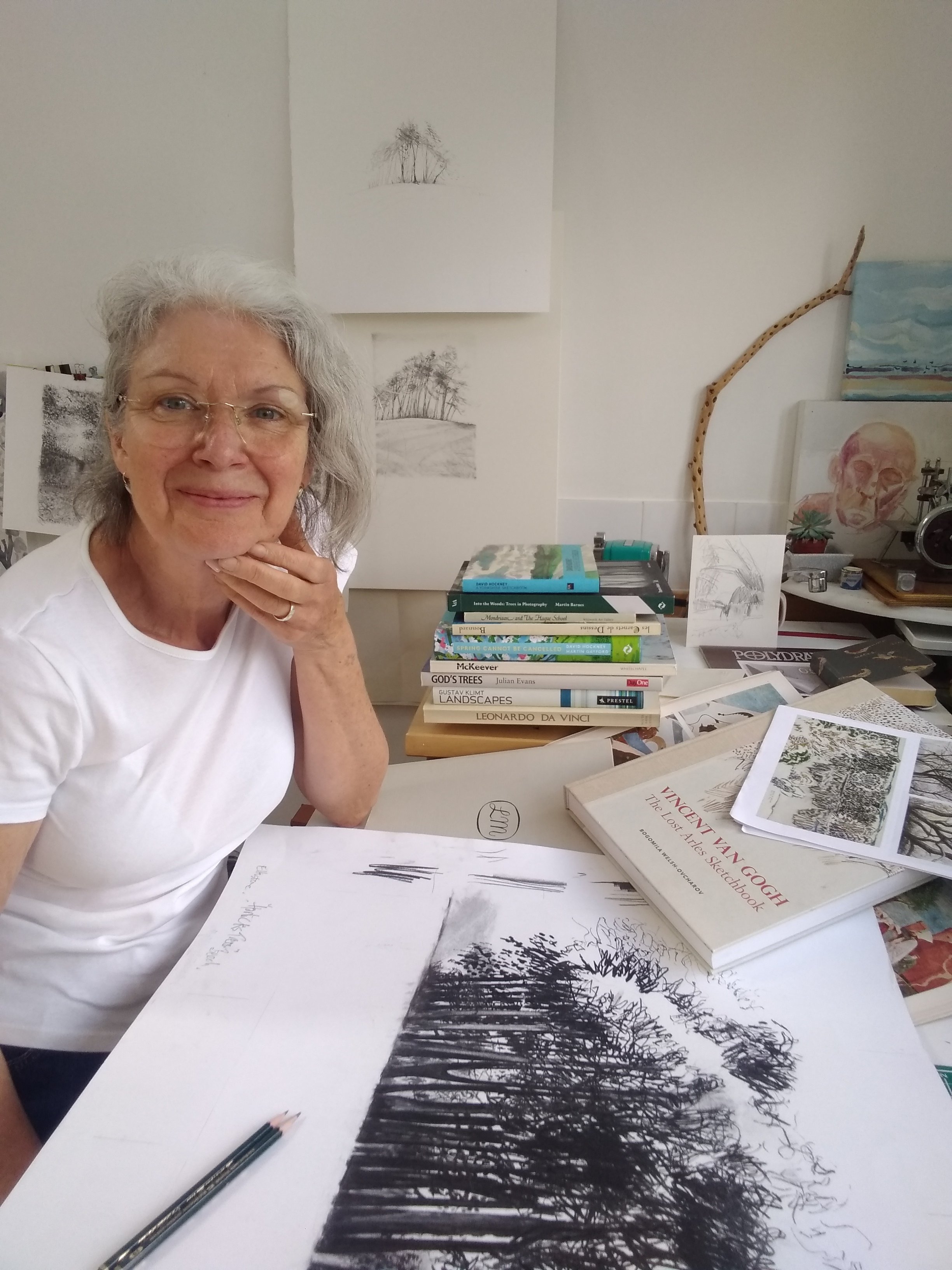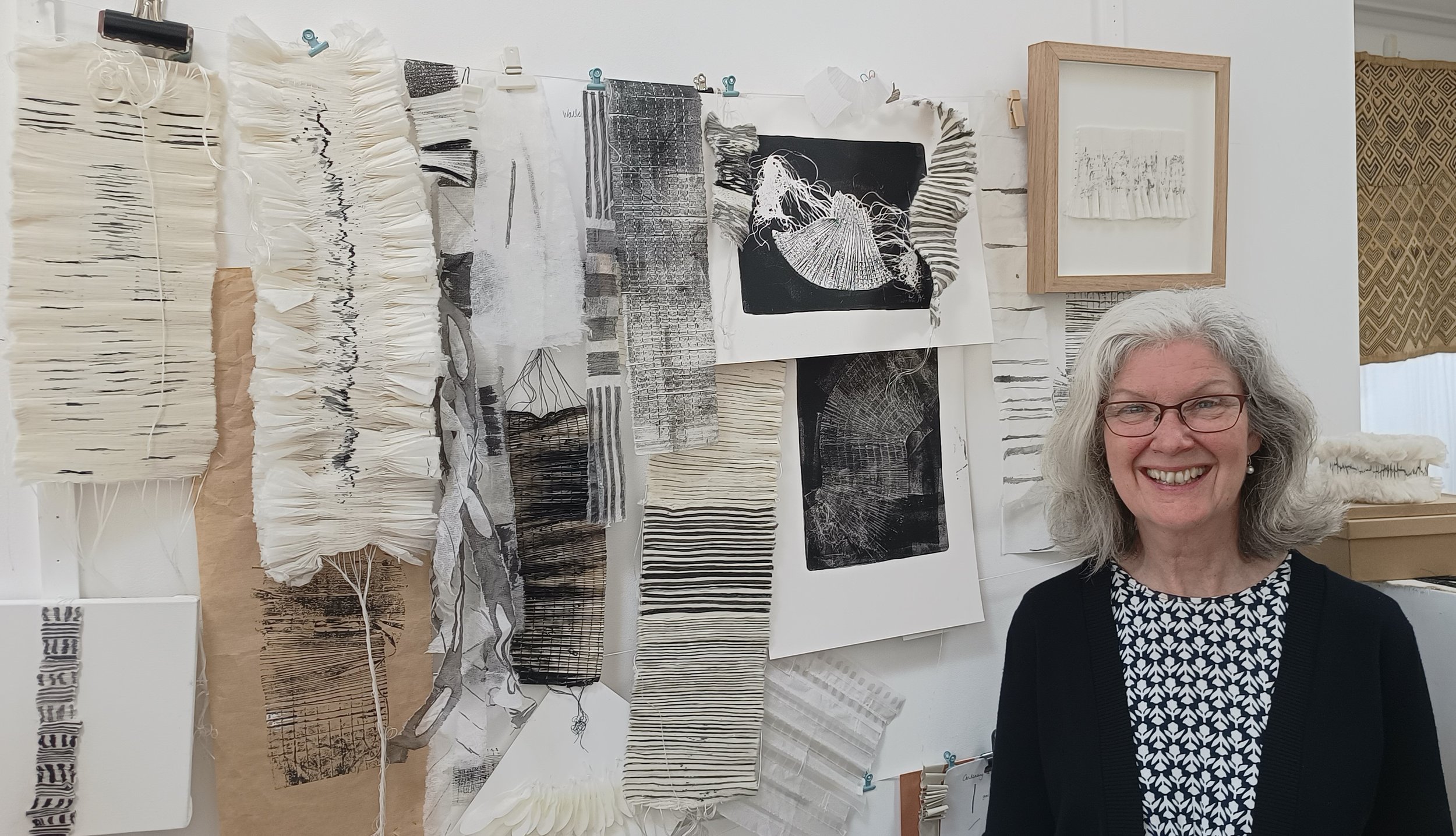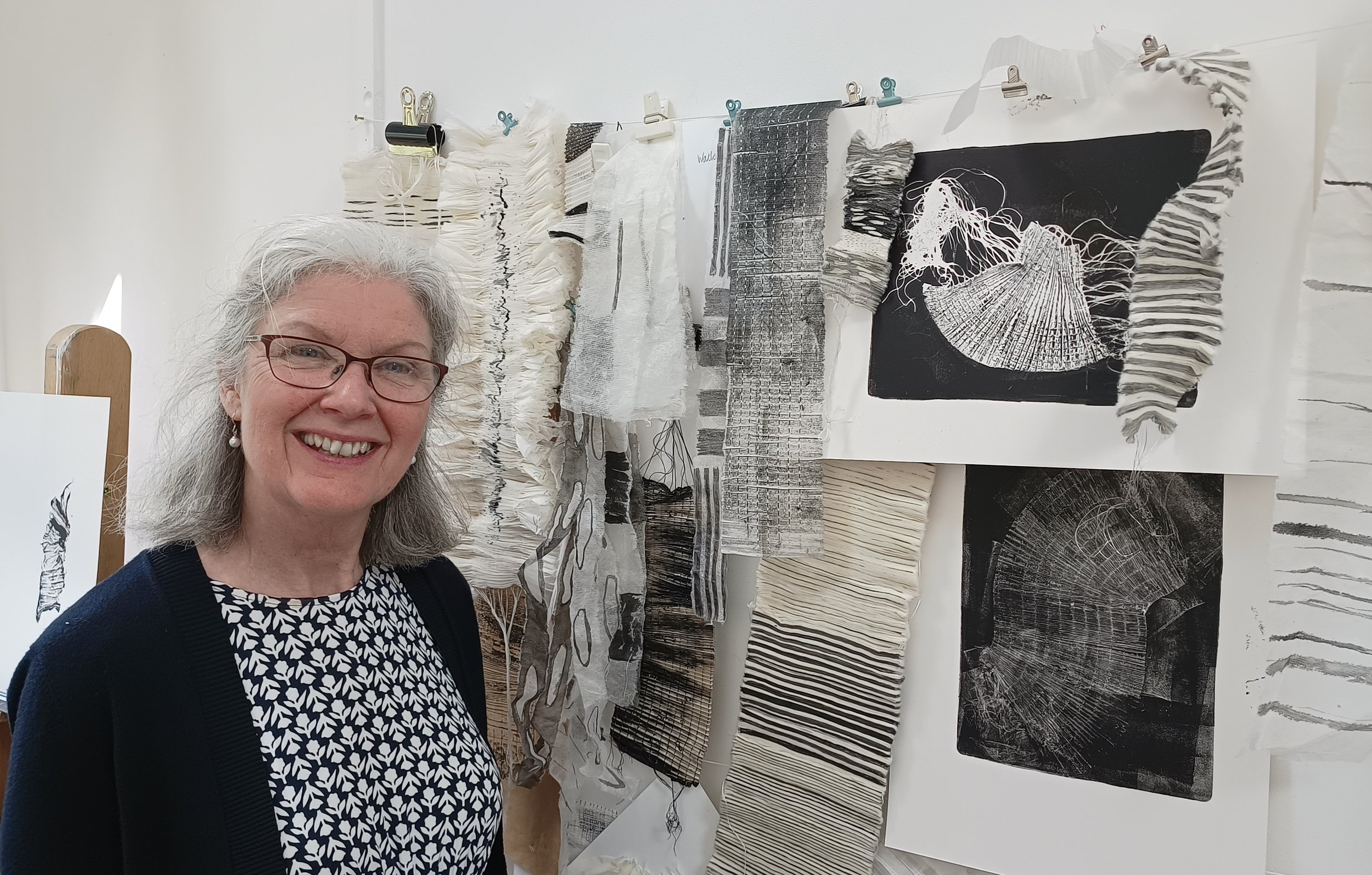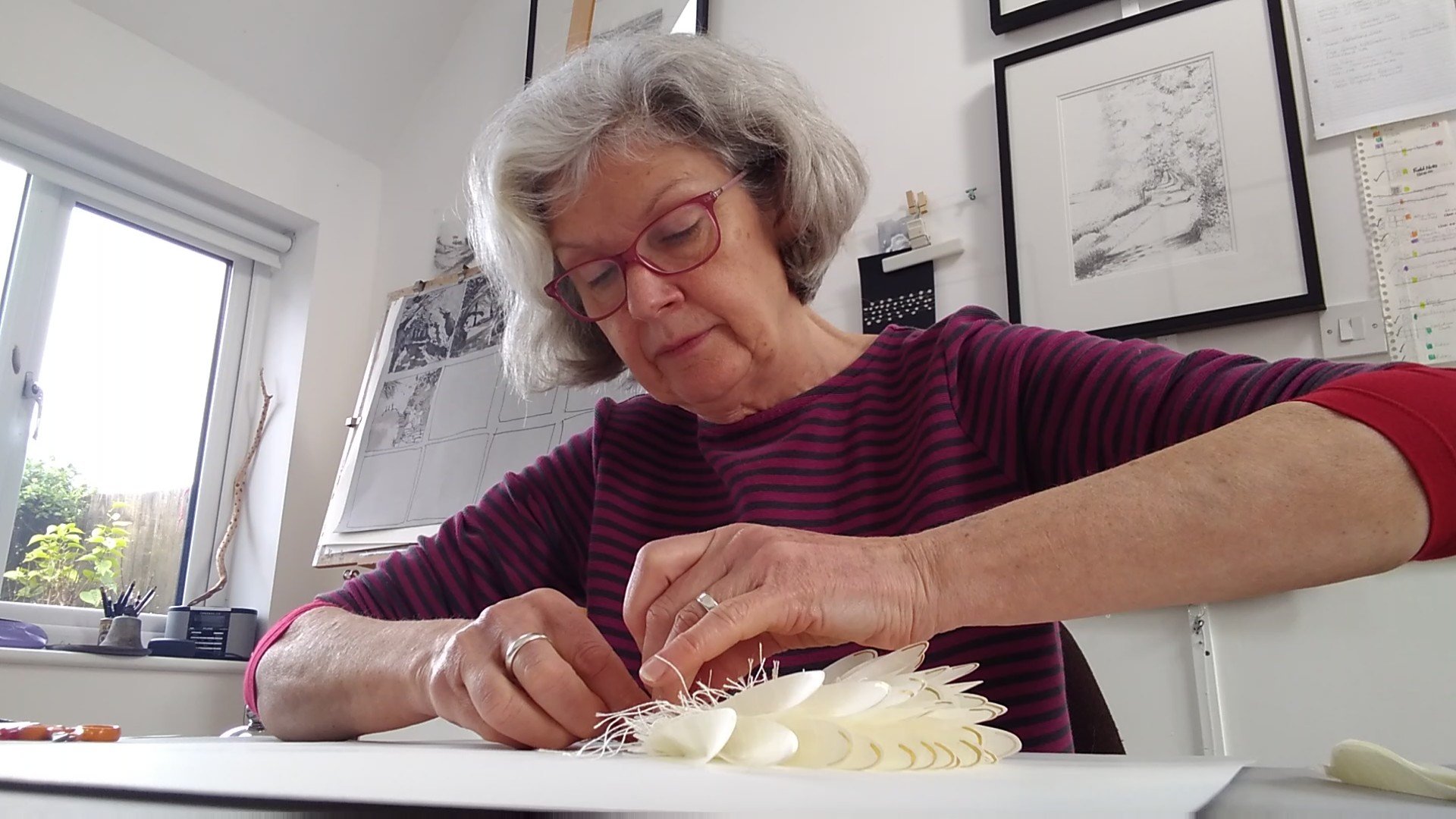Carole Bury
Please could you tell us about where you grew up and where you live now.
I live in a small village not far from Cheltenham and Cirencester in the Cotswold Hills in the UK. I have lived here for 20 years and definitely a return to Gloucestershire, but in between there has been Manchester, London, Papua New Guinea and Kent.
I was born and went to school in rural South Gloucestershire. For most of my childhood we lived in a big house in a hamlet, which had a busy, chatty village shop, 2 churches and was surrounded by farms, and a little market town a couple of miles away if you chose to walk over the fields. I lived with my parents, older brother and grandma. Dad was the carpenter and joiner for the local engineering firm making agricultural engines, but they developed side lines and he made quality wooden benches. We used to love discovering his metal tags on them, all over the country on village greens and promenades. He is a serious musician and ran a dance band for many years, and children came to the home for piano lessons. My brother and I had an enormous garden and village friends to learn and play with. The home was filled with music, carpentry, dressmaking, gardening and a wonderful attitude of making and adapting.
I don’t really remember visiting Art Galleries until I was in the 6th form at school, but as a family we were always visiting castles and Gardens, and travelling to extended family in North Yorkshire. A different landscape to explore and journeys that involved plans and Maps – which I love! My passion and interest in geography, geology and travel books dates from these early years. My garden here in Elkstone contains plants from that Upper Cam garden, plants that retain the stories of where mum found them originally and the emotional ties we have with plants.
Did you have an interest in art as a child?
I grew up surrounded by parents who everyday used cloth, wood, music, and enjoyed gardening. They showed me how to be the best I can. I learnt my craft by example. I couldn’t not believe in myself.
Did you have a formal art education or are you self taught?
I was using a singer sewing machine to make clothes for my dolls at 7 or 8 years old. And I made clothes all through my teenage years.
Our school transitioned from Grammar to Comprehensive, and there were apparently funds to support the development of particular interests. An A Level course was established and run just for me, in Needlework (as it was called then), and my teacher, Barbara, has remained in contact with me over the years.
My studies with her included thrilling trips out in her bright orange TR7 to the Bristol Markets and sewing yards and yards of bridal fabrics in her home studio. And yes I passed my A level with distinction.
Only in later years did I learn Barbara was a competent trumpet player, singer and Calligrapher of note. I also studied Art and Geography at A Level.
I moved to Cheltenham for the Foundation year at the College of Art and was accepted to Manchester to take a wonderful three year Degree course in Fine Art Textiles/Embroidery at the Polytechnic. It was here that the reasoning and content behind any embroidery work was really important. Historically, embroidery charts women and their place in society, and our responsibility, I feel must continue.
My parents were incredibly supportive of my desire to have a creative career, and mum has shared so much of the journey with me. Only recently at 92 was she running fabric through my Princess Pleater and letting her fingers and mind wander with the possibilities.
Was there a person or a place in your past that influenced you or you feel set you on the journey to where you are now?
Definitely mum and dad, but also my drawing tutor at Manchester who pushed, and pushed me, stretching my visual vocabulary and allowing the techniques and skills to be my voice.
Anne Morrell, Head of Department, saw beyond the gawky young woman, and provided me with my own studio when my experiments with latex, glass fibre and resins became too unbearable for the other students. She introduced me to Constance Howard and so many wonderful practitioners. It was Anne and Isabel Dibden who introduced me to the 62 Group. I was an active member for about 15 years and we witnessed Textiles breaking barriers in the Art World, we gained exhibitions in major galleries in the UK and sent a comprehensive exhibition out to Japan,
Whats the best thing about being an artist?
I can elevate my dreams to visual reality, I do not have to conform, or follow some one else’s terms.
Slow drawing or stitching gives time to think.
And the worst?
I put enormous importance on what I do, and it frustrates me when I fail to shift the perception of others.
What has inspired or influenced you?
My family, friends, faith, walking. The creation I see around me and in front of me, and in the wider world just gets my creative juices flowing.
There are artists who help me open my eyes like Hockney, van Gogh, and recently re-visiting the work practice of Cézanne was illuminating.
What international art destination do you most want to visit?
The drawings of van Gogh in the Amsterdam Rijksmuseum and the van Gogh Museum.
Paper factories and galleries in Japan.
What work of art would you most like to own?
I recently saw the work of Ruth Asawa in the Museum of Modern Art in Oxford, I wouldn’t mind one of her hanging sculptures, and a large calm, monochrome Welsh Quilt.
I’m pouring over Agnes Martin at the moment; I’d happily accept one of her large paintings for my home.
Please tell us of your working environment?
The Studio is built onto the side of the house, and I particularly enjoy my short commute to work. It is light filled and quiet.
The walls are currently loaded with hand stitched and pleated paper samples, there are boxes full of pleats and smocking trials, and stacks of mono-prints from them. The inspiration comes from garden drawings clipped to the walls, and landscape drawings full of mark making explorations, investigating different textures, weights and gestures.
I have running water and a large butlers sink.
I am permanently in that balance between free flow creativity and experimentation, and cleaning up and tidying.
I have wide bookshelves full of art and textile inspiration. And I enjoy listening to Radio 4 and music. All the admin part of my practice is done in the Study in the house.
The Studio spills into the garden, which is private and surrounded by tall trees and 'garden rooms'. The secret gate in the fence leads into our allotment, and this borders open arable fields and woods.
Extending the studio space to work in the garden and Garden Room is a real bonus. There is an area for different processes, moods and activities.
The four words I would use to describe my Studio are Visionary. Reflective. Intimate. Liberating
Please tell us a little of the processes involved in making your art?
Everything begins by looking, feeling and drawing.
Learning to understand and altering a viewpoint.
Eliminating details and processing the essential.
As an embroiderer, I will research traditional techniques, and this will usually start a 3 Dimensional textural journey. Years ago I chose paper over fabric in order to combine drawn marks and a surface. Recently the two have become so interlinked and combined that they are not separate entities. I am slowly needing to take stock of this direction the work is moving towards. I am discovering it is a slow methodical path to allow the two to become one. To mould and inform each other.
New framing solutions are becoming necessary for the 3 Dimensional pleated work, and all this takes time and energy. I have been working with a small engineering company, which is way out of my normal comfort zone.
What's the most indispensable item in my studio?
Quiet
Light
Space
Trustworthy, workhorse - a 43 year old Bernina sewing machine.
Where are you finding ideas and inspiration for your work currently?
Trees
Fields
Blossoms
Growth ……. all feed my eyes, my brain and my well-being.
If you weren’t an artist what would you be?
I am an artist, therefore I am unable to be anything else.
As I love gardening and sewing I guess one of them would have been my occupation.
What advice would you give to those aspiring to make a living out of art?
Listen to yourself, stay true to your dreams and never be afraid of hard work.
Ask questions and advice to those artists, practitioners and friends who you trust. The business part is challenging, but fun, and there are skilful professionals to use, and pay to help you. Always out source those processes that prevent you creating.
What is the most important thing about yourself
My honesty and trustworthiness.
An unexpected thing about myself
I adore listening to Test Match Special in the cricket season.
NOT A Pure MEMBER? JOIN HERE
